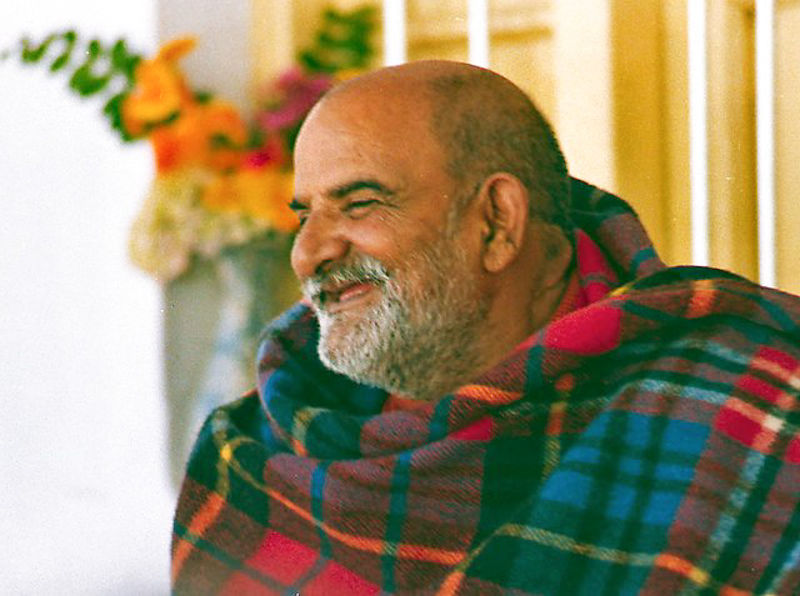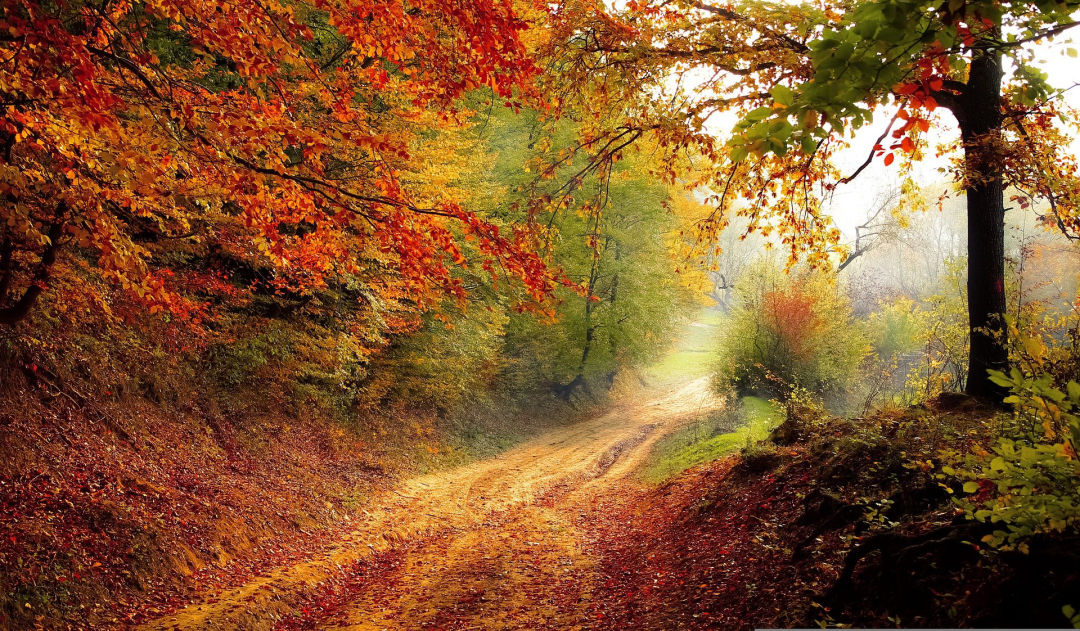The human psyche is wired to have close ties to the surroundings. Nature, including mountains, rivers, trees, the sun and the moon, has historically been revered by ancient cultures. Only when we begin to lose touch with nature and ourselves do we start polluting and harming the environment. These mentalities that support our relationship with nature need to be revived.
In the environment we live in today, many people have become greedy and want to make rapid gains and see quick results. Their acts throw off the ecological balance, damage the physical environment and subtly incite unfavourable feelings in both themselves and those around them. Most of the violence and suffering in this world are the result of these bad energies expanding and compounding repeatedly. These feelings are the fundamental drivers of conflicts and wars, which frequently result in environmental damage that is challenging to repair. Since the human mentality is the main cause of both physical and mental pollution, it needs to be addressed.
Realising that we are nature—not something distinct from but an essential component of it all—is crucial for developing a spiritual connection with nature. The same atoms, minerals, and energies that make up the Earth also make up our body. Many quantum physicists and academics believe that our awareness and our body are reflected in everything in the outside universe. For instance, the proportion of water on the globe corresponds to the proportion of water in our bodies and so forth!
“Yat Pinde Tat Brahmande" is an ancient shloka found in the Puranas, an ancient philosophical and yogic text. This shloka is believed to be at least 8000 years old! The shloka states “All that is outside you are within you’ or ‘Your body is a miniature universe’. Hence, we and nature, universe, cosmos are deeply and intricately interwoven and connected! Its just a matter of being aware and observation!
“In every walk with nature one receives far more than one seeks!” ~ John Muir
It's important to concentrate our attention on the natural world around ourselves, including nearby ponds, rivers, trees, and greenery, as well as any nearby little insects that may be flying. Consider how they are interconnected with one another and the ecosystem while also imagining that you are a part of this larger connection. Take in the clean air that is being released by the nearby trees and plants. Enjoy the flowery fragrance and bright colours that surround the park. You'll see that wild flowers are just as lovely as those grown in gardens. The cold, soothing feel of the green leaves will help us to clear our thoughts. Put your hands on the tree trunks and feel them. Admire their tenacity and fortitude. How they have remained strong all these years! One will have a new perspective on our own challenges if we consider their experiences over the years!
Nature, therefore, has the capacity to be endowed with spiritual significance and force! Mountains, lakes and forests can evoke awe or a sense of the holy. They are a tool that people can use to establish spiritual connections and elicit spiritual experiences. People may use what are referred to as ‘natural amenities’ as spiritual resources to connect with the sacred.
Uttarakhand, Dev Boomi – The Land of God’s has attracted many enlightened souls in modern times and continues to pull all beings alike!
This tiny enclave of India's mystery emits a seductive air of tranquilly and spirituality in every nook and cranny. Uttarakhand, a breathtakingly beautiful region covered with some of the holiest mountains, lakes and rivers, is particularly abundant for those seeking hiking adventures, spiritual clarity, peaceful vacations and fascinating flora & fauna. You feel spiritually fulfilled as you travel the land itself.
The famous renaissance man Rabindranath Tagore, whose 12-year-old daughter Renuka had developed Tuberculosis and whose wife Mrinalini had passed away in 1902. He had departed for the Kumaon hills in early May 1903 with Renuka and his younger son Samindranath. In order to amuse the motherless youngsters, he stayed in Ramgarh, close to Nainital, till August and penned the ‘Shishu’ (The Child) poem collection, which later went by the name ‘The Crescent Moon.’ Midway through September 1903, he returned to Calcutta with the two kids, and Renuka passed away. Later, Samindranath also passed away in 1907.
Tagore, however, was unable to forget the quietude of the Kumaon Himalayas and he frequently travelled there to savour the seclusion that so inspired him. While he was in Kumaon in 1903, he produced several ‘Gitanjali’ verses. And it was at this time that he developed the idea for Visva Bharati, which is now a public central university and a major national institution with its headquarters in Shantiniketan, West Bengal, India. Visva Bharati's name means "the communion of the world with India." It was a college up till independence. A 1951 act of the Parliament granted the institution the status of a central university shortly after it gained independence.
Also, when discussing Uttarakhand's spiritual significance, it is important to specifically note Kainchi Dham, which has become one of the area's popular modern pilgrimage sites. Shri Neem Karoli Baba popularly called Maharaj-ji, a contemporary spiritual leader, considered Kainchi Dham at Uttarakhand, as his spiritual home. The ashram and shrine the Guru erected there are supposed to still be filled with his goodness and soul even after his death. As soon as one enters the ashram, they are struck by how spotlessly clean the surroundings are. The presence of the ashram's founder, according to legend, emanates certain uplifting energies across the entire facility. The Lord Hanuman is worshipped in the Kainchi Dham Temple.
Along the Nainital–Almora route, Kainchi Dham is a sanctuary of serenity and peace. The famed hill station of Nainital is 18 kilometers away from the ashram. It’s a temple dedicated to Lord Hanuman and serves as the area's spiritual haven in the Kumaon Hills of Uttarakhand. It’s said that, the spiritual teacher known by his moniker Maharajji was the first to build a platform to mark the location where two other spiritual teachers, Sombari Maharaj and Sadhu Premi Babu, performed yagna in the Kainchi village. Over the raised platform, a temple dedicated to Lord Hanuman, an ishta devata of Maharajji, was later built. Kirtans, bhandaras, and bhajans began to take place as devotees began to arrive.
Around the temple, a small ashram also developed, acting as a base for followers and students looking to get blessings from the revered spiritual guide. Many well-known western spiritual figures, like Ram Dass, who were followers of Maharajji are believed to have spent time with the adored spiritual master here. His followers believe that paying a visit to the temple at least once in their lifetime is required.
His followers and admirers volunteered to build a temple in his honour there after the baba passed away in 1973. The temple is home to a murti of the spiritual guide and a kalash with the ashes of his mortal body. The temple's grounds also include a sacred cave, which Neem Karoli Baba Maharajji is claimed to have used as his personal sanctuary for prayer and meditation.
After Steve Jobs recounted his pre-glamour visit to Kainchi Dham, the ashram gained notoriety, across the world! He reportedly spent a year or so in India looking for spiritual awakening. He was thrilled to see Neem Karoli Baba’s Kainchi Dham, but he was disappointed to learn that he had passed away a few months before. His time at the ashram in Kainchi Dham had a profound impact on him. When Mark Zuckerberg was going through a difficult time in his life, he is claimed to have recommended him to visit the temple in Kainchi Dham after seeing a clear vision of his life's purpose. Unexpectedly, even Mark Zuckerberg claimed his visit to Kainchi Dham was responsible for his fortune's turn around. After such important trips were made public, Kainchi Dham became known as a popular pilgrimage site. A lot of foreigners still visit the Ashram. Spiritual leaders Ma Jaya, Ram Dass, musicians Jai Uttal & Krishna Das, humanitarian Larry Brilliant, scholar and writer Yvette Rosser and Daniel Goleman, to name a few, visited Kainchi Dham back in their heydays’!
Approximately one lakh devotees from various regions of Uttarakhand and the adjacent state attend the Kainchi Dham annual fair, every year. The fair is conducted on 15th of June every year to mark the anniversary of the ashram and Hanuman Temple Neem Karoli Baba's foundation.
Kainchi Dham is not difficult to get to. Kainchi, a vibrant town next to Bhowali in Uttarakhand, with excellent road access. One can travel directly to Kainchi by bus, taxi, or cab. You can reserve lodging at the ashram located inside the temple complex by sending an email or letter to the address provided. Additionally, accommodations are available in and around Kainchi, Bhowali or Nainital. Kainchi Dham is accessible throughout the year. Any month is acceptable for visitors to the shrine. The best time to visit the temple, however, changes from season to season. The temple is open from 6 a.m. to 7 p.m. in the summer and 7 a.m. to 6 p.m. in the winter.
Uttarakhand's terrain exhibits a definite surrealistic quality. The vibrant Badrinath Temple nestling in the shadow of snow-topped Nilkantha, the colonial-era-tinged Almora with its lovely valley excursions, along with Rishikesh, a gateway to the sacred Himalayas that mixes devotion and meditative dormancy and Kainchi Dham, spiritually charged with esoteric energies. It is amazing how anything makes sense, much less be as adorable as it is in actuality, given how much is crammed into this small area. In addition to possessing a particularly alluring kind of organic tranquilly, Uttarakhand is a wonderfully divine location due to its spiritual and religious significance in the abode of nature.

